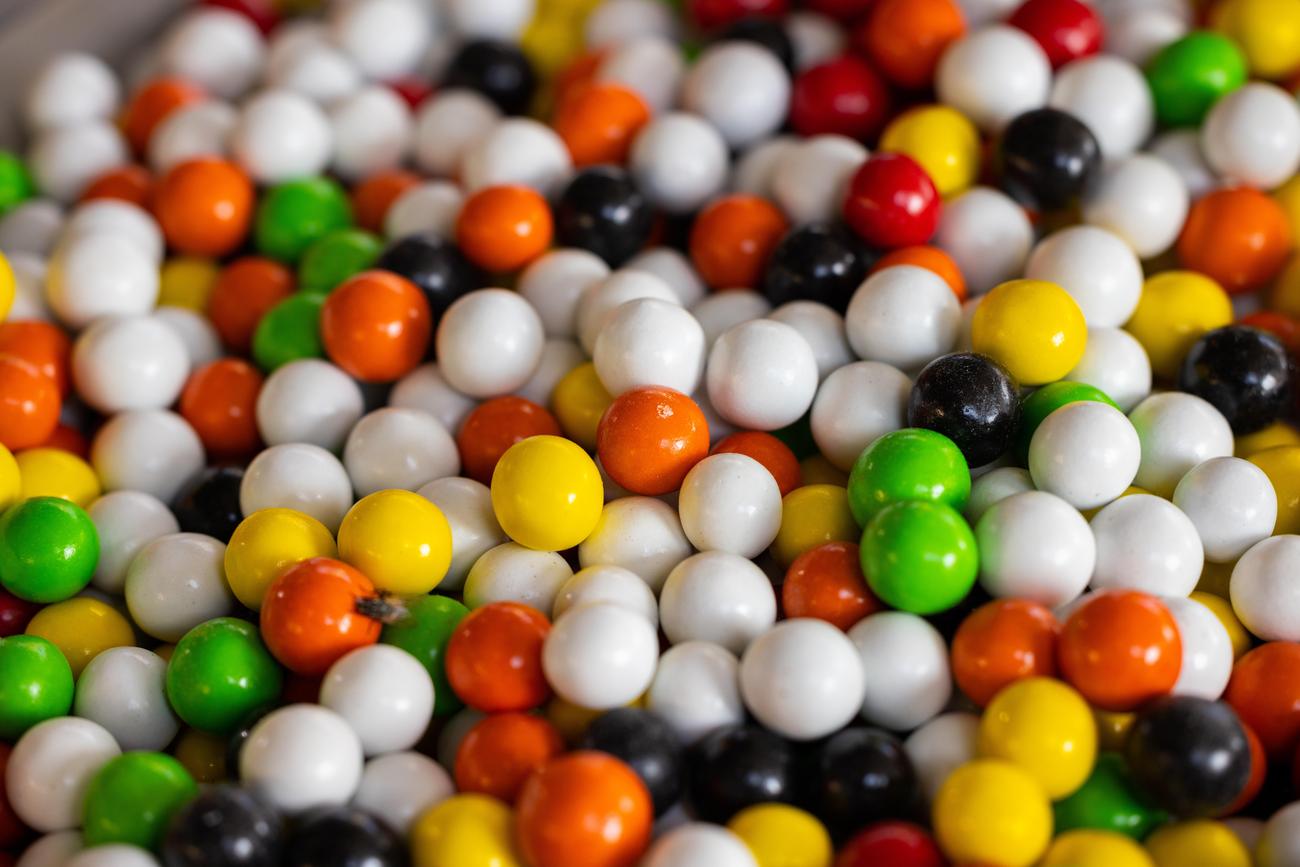Are you ready to indulge your sweet tooth and embark on a delightful journey through the sugary clouds? Look no further than the enchanting realm of cotton candy! In this article, we will uncover a kaleidoscope of fun facts about everyone’s favorite fluffy treat. From its whimsical origins to mesmerizing techniques of creation, prepare to be dazzled by the sweet secrets hidden within each delightful confection. So, sit back, relax, and get ready to uncover the captivating world of cotton candy!

Fun Facts About Cotton Candy
Did you know that cotton candy threads are even thinner than a human hair? It’s true! This delectable treat is not only light and airy, but it also has some fascinating fun facts that will make you appreciate it even more. Let’s dive into the sugary world of cotton candy and unveil its delightful secrets.
One of the most intriguing aspects of cotton candy is its ability to come in a plethora of flavors. By simply adding flavor to the sugar, you can create a variety of taste sensations. From classic flavors like strawberry and vanilla to more adventurous options like bubblegum and cotton candy-flavored ice cream, the possibilities are endless. Talk about a burst of flavor!
But here’s the best part: cotton candy is surprisingly healthier than many other desserts. It is fat-free, gluten-free, and contains no preservatives or salt. With approximately 115 calories per serving, it can satisfy your sweet tooth guilt-free. So, go ahead and enjoy this nostalgic treat without worrying about your waistline.
Now, you might be wondering how long cotton candy lasts. Well, theoretically, it can last for years. Why? Because the main component of cotton candy is sugar, and sugar doesn’t spoil easily. So, whether you find a bag of cotton candy at the back of your pantry or stumble upon a forgotten cone in a drawer, chances are it’s still perfectly fine to enjoy.
Have you ever wondered how cotton candy gets its unique texture? The process of creating cotton candy involves spinning melted sugar at high speeds. As the sugar solidifies, it forms those delicate, fibrous strands we all know and love. It’s like a sugary cloud that melts in your mouth.
Now, let’s travel the globe and explore the different names cotton candy goes by. In the United States, it is commonly known as cotton candy, but in other parts of the world, you’ll find it referred to as “candy floss,” “fairy floss,” “la barbe à papa,” and even “zucchero filato.” No matter what it’s called, the sweet joy it brings is universally recognized.
Did you know that there is a National Cotton Candy Day? It’s celebrated on December 7 in the United States. So mark your calendars and indulge in this sugary delight to commemorate the fluffy goodness that cotton candy represents.
Cotton candy has also inspired similar confections in other cultures. In Korea, you’ll find a similar treat called Kkul-tarae, which is made by stretching and twisting honey and maltose into thin strands. In Persia, they have pashmak, which resembles the texture of cotton candy but is made from sesame and rosewater. These variations prove that the magic of cotton candy extends beyond borders.
Now, here’s a deliciously surprising fact: cotton candy was invented by a dentist and a confectioner duo. Yes, you read that correctly. Back in 1897, dentist William Morrison and confectioner John C. Wharton decided to create a machine that could spin sugar into fine, fluffy strands. Talk about an unexpected collaboration!
Speaking of impressive feats, did you know that the record for the longest strand of cotton candy measures a whopping 1,400 meters? That’s longer than 14 football fields! It’s a true testament to the artistry and dedication that goes into creating this sugary masterpiece.
Before the invention of the cotton candy machine, a predecessor known as spun sugar existed. It was made by hand, meticulously spinning melted sugar to create delicate decorations for desserts. The invention of the cotton candy machine revolutionized the process, making it easier and more efficient to enjoy this sweet confection.
In summary, cotton candy is more than just a tasty treat—it’s a marvel of culinary creativity. Its fine threads, endless flavors, and healthy attributes make it a delightful choice for both young and old. Whether you call it cotton candy, candy floss, or any other name, this sugary delight holds a special place in our hearts. So, the next time you indulge in a fluffy cloud of sweetness, remember these fun facts and savor every magical bite.
“From its thin threads to its diverse flavors, cotton candy is a sugary delight that surprises with every bite.”
Cotton has been one of the most popular fabrics for centuries, and it’s not hard to see why. Its softness, breathability, and versatility make it a staple in many wardrobes. But did you know that there are even more fascinating facts about cotton? If you’re curious to learn more, check out these 3 facts about cotton. Just click here to dive deeper into the world of this incredible fabric: 3 facts about cotton.
Fun facts about cotton candy are always fascinating, but did you know there are surprising trivia surrounding this sweet treat? Delve deeper into the world of cotton candy and uncover intriguing information by clicking here – surprising trivia on cotton candy. Prepare to be amazed by the delightful insights about cotton candy production that you can discover, simply by clicking here – amazing insights about cotton candy production. Explore the hidden wonders behind this sugary delight and satisfy your curiosity today!
How Cotton Candy is Made: The Science of Creating this Sweet Delight
[youtube v=”9bNaBpSh0vU”]
Cotton candy, a beloved treat at carnivals and fairs, is not actually made from cotton. Despite its name, cotton candy is made entirely out of sugar. The name “cotton candy” was given due to its similarity in appearance and texture to cotton. This fluffy and sweet treat comes in various colors and flavors, such as pink, blue, vanilla, and bubblegum.
To understand how cotton candy is made, let’s take a closer look at the transformation that sugar undergoes. Sugar, in its solid crystal form, is quite different from the fluffy strands of cotton candy. Solid sugar crystals have tiny shapes that remain relatively unchanged. The sugar crystals used for cotton candy are usually mixed with food coloring and flavoring to enhance their taste and appearance.
The process of making cotton candy involves a machine specifically designed for this purpose. As the machine heats up, the solid sugar crystals begin to melt, changing from a solid state to a liquid state. In this liquid form, the sugar can be easily manipulated and shaped.
The cotton candy machine has small holes that allow the liquid sugar to be spun into long, thin lines. As the machine spins, the liquid sugar drips through these holes and cools down rapidly, transforming back into a solid state. However, these solidified sugar threads are much thinner than a human hair, and they form the characteristic wispy strands of cotton candy.
In essence, cotton candy is made by melting sugar crystals into a liquid state, then rapidly cooling and solidifying them into thin, fluffy threads. This process results in the creation of a big, fluffy puff that we recognize as cotton candy.
Cotton candy is a fascinating example of how a simple ingredient like sugar can be transformed into a delightful and visually appealing treat. Its unique texture, sweet flavor, and vibrant colors make it a favorite among people of all ages.
“Although cotton candy is made entirely of sugar, its transformation through heat and rapid cooling creates a fluffy, wispy texture that sets it apart from solid crystals of sugar.”
As we delve into the science behind cotton candy, it’s worth noting that despite its indulgent nature, cotton candy is a fat-free and gluten-free treat. Moreover, it contains no preservatives or added salt, making it a relatively pure form of sugary delight.
“With its fat-free, gluten-free, and preservative-free nature, cotton candy offers a guilt-free pleasure for those with dietary restrictions.”
Cotton candy’s high sugar content also contributes to its impressive shelf life. Due to the low water activity in sugar, cotton candy can last for an extended period, sometimes even years, if stored properly.
“The high sugar content of cotton candy acts as a natural preservative, granting it a remarkable shelf life that can span several years.”
Cotton candy, although commonly referred to by this name, goes by different names in various parts of the world. In the United Kingdom, it is known as “candy floss,” while in Australia and New Zealand, it is called “fairy floss.” These regional variations reflect the global popularity of this sweet confection.
“Cotton candy’s global appeal is evident through its alternative names, such as ‘candy floss’ and ‘fairy floss,’ used in different countries.”
This delectable treat has a rich history, having been invented by a dentist and a confectioner in 1897. Its popularity soared with the introduction of cotton candy machines, revolutionizing the process of creating this sugary delight.
“The invention of cotton candy machines revolutionized the production process, expanding its availability and popularity.”
It’s worth mentioning that cotton candy has found its special place in celebrations, with National Cotton Candy Day celebrated on December 7 in the United States. This day serves as a reminder of the joy and delight that cotton candy brings.
“National Cotton Candy Day, celebrated on December 7, commemorates the happiness and delight brought by this sugary confection.”
While cotton candy is a well-known treat in many cultures, similar confections exist throughout the world. These variations, like the Indian sweet “Pashmak” and the Iranian dessert “Floss Halva,” demonstrate the universal popularity of this type of sugary delight.
“The global presence of similar confections, such as ‘Pashmak’ in India and ‘Floss Halva’ in Iran, showcases the widespread love for cotton candy-like treats.”
In 2009, an impressive feat was achieved with cotton candy when the longest strand ever measured reached a staggering length of 1,400 meters. This astonishing record highlights the creativity and innovation that surrounds this beloved sugary treat.
“The record-breaking length of 1,400 meters achieved by the longest cotton candy strand showcases the incredible possibilities and imagination associated with this sweet delicacy.”
Cotton candy continues to captivate people of all ages with its whimsical appearance, delightful taste, and intriguing production process. Whether enjoyed at a carnival, fair, or special occasion, cotton candy never fails to bring joy and fun to the table.
“With its whimsical appearance, delightful taste, and enchanting production process, cotton candy remains a beloved treat that brings happiness to people of all ages.”
So, next time you indulge in a fluffy cloud of cotton candy, take a moment to appreciate the captivating science behind its creation.

FAQ
Question 1: How thin are the threads of cotton candy?
Answer 1: The threads of cotton candy are thinner than a human hair.
Question 2: How are different flavors of cotton candy created?
Answer 2: Different flavors of cotton candy can be created by adding flavor to the sugar during the production process.
Question 3: Is cotton candy a healthy dessert option?
Answer 3: Yes, cotton candy is a healthier dessert option as it is fat-free, gluten-free, and contains no preservatives or salt. It has approximately 115 calories per serving.
Question 4: Does cotton candy have an expiration date?
Answer 4: Cotton candy theoretically does not expire for years due to its main component, sugar.
Question 5: What are some other names for cotton candy?
Answer 5: Cotton candy is made and sold globally under different names such as “candy floss,” “fairy floss,” “la barbe à papa,” and “zucchero filato.”
- China II Review: Delicious Food & Speedy Service - April 17, 2025
- Understand Virginia’s Flag: History & Debate - April 17, 2025
- Explore Long Island’s Map: Unique Regions & Insights - April 17, 2025
















